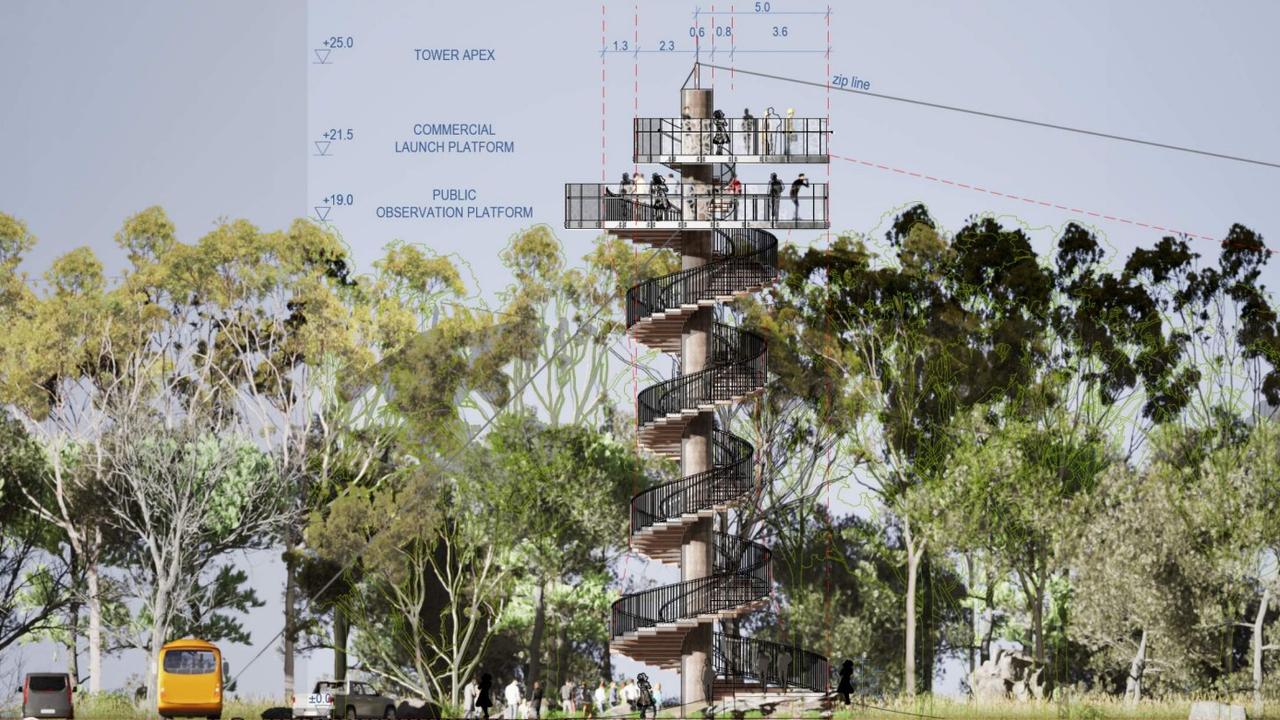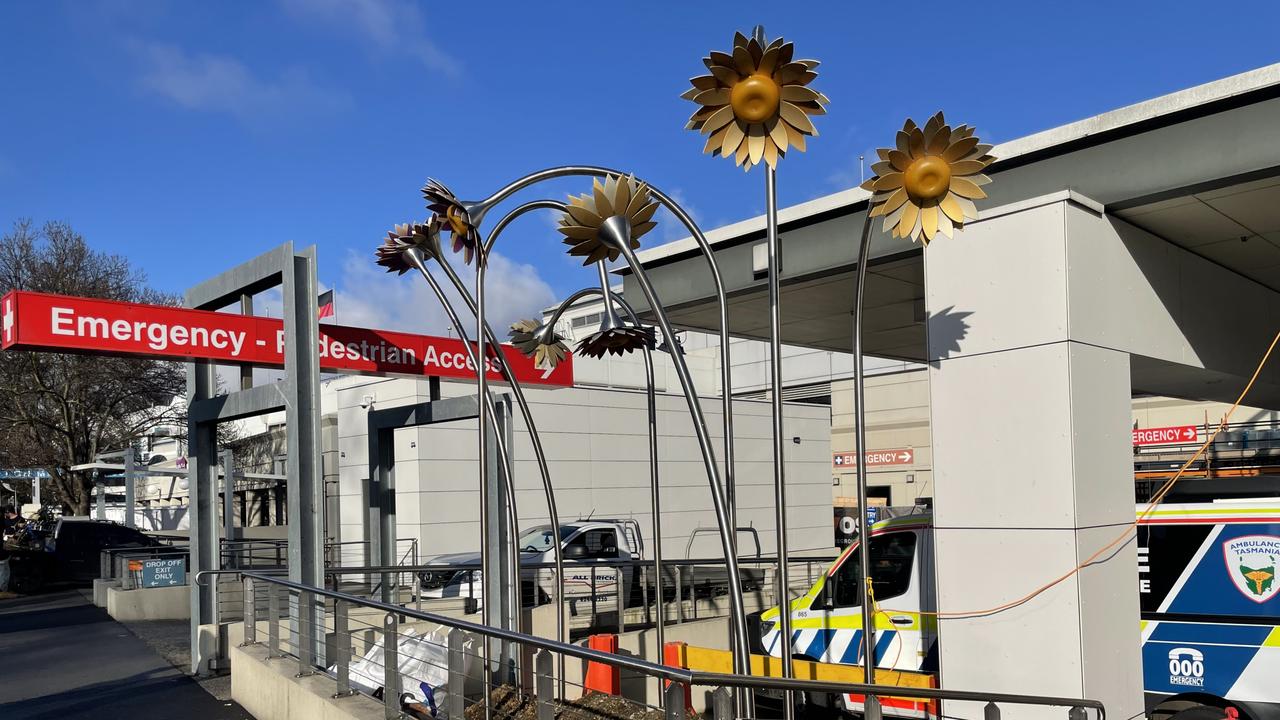Incat building ‘department store on water’ as Clifford plugs into electric revolution
Right from the outset, “Hull 96” was always going to be a groundbreaking assignment for veteran Tasmanian shipbuilder, Bob Clifford.
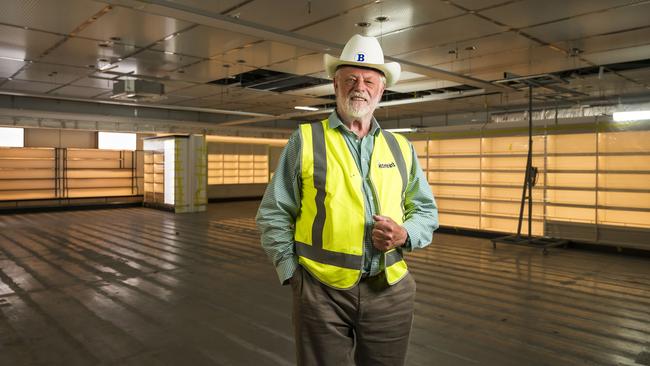
Tasmania
Don't miss out on the headlines from Tasmania. Followed categories will be added to My News.
Right from the outset, “Hull 96” was always going to be a groundbreaking assignment for veteran Tasmanian shipbuilder, Bob Clifford.
Nearing completion at Incat’s Goodwood shipyards, the 130m battery-powered vessel will become the world’s largest electric ferry when it launches later this year.
The passenger and vehicle catamaran is also being fitted with a water-jet propulsion system instead of traditional propellers to allow it safe passage across the shallow waters of the Rio de la Plata (River Plate) between Argentina and Uruguay.
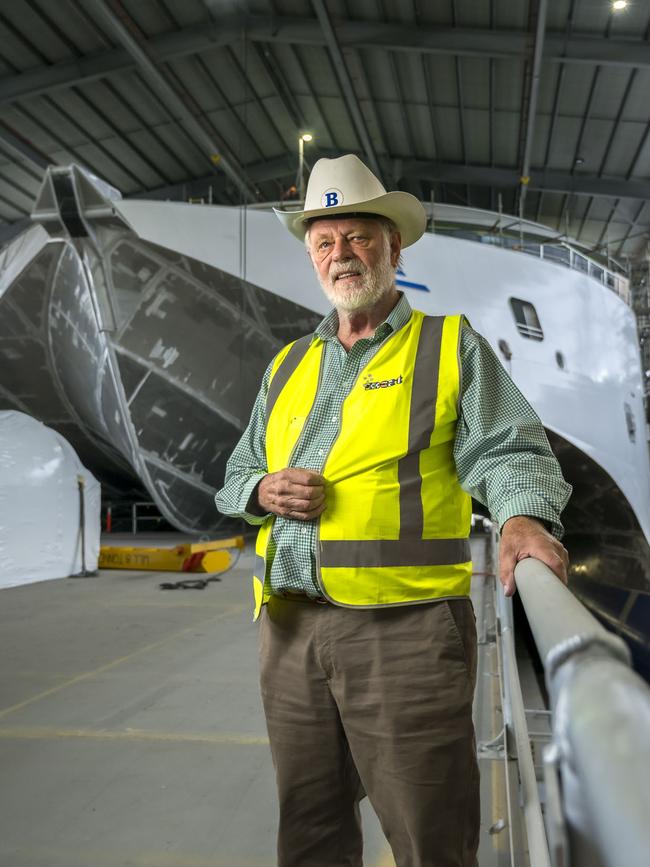
But it is the vessel’s internal fit-out that is really breaking boundaries, with Incat’s team of joiners and cabinet makers currently turning an entire deck into a 2300sqm duty-free and retail labyrinth that Mr Clifford described as “a department store on water.”
“This will probably be the biggest duty-free shop in the world, but they will sell everything here, even furniture,” Mr Clifford said of South American operator Buquebus.
“The journey on this particular route takes 90 minutes, and is one of the busiest between Argentina and Uruguay.
“The boat will carry 2000 passengers per trip, so could be easily been moving more than 10,000 passengers each a day.
“It’s s a major business, and they will sell a lot of duty free.”
Ever the innovator, Mr Clifford said he and his team had taken plenty of lessons from the construction of Incat’s first electric ship as the company seeks to ramp up production over the next few years, including at a new site in Boyer.
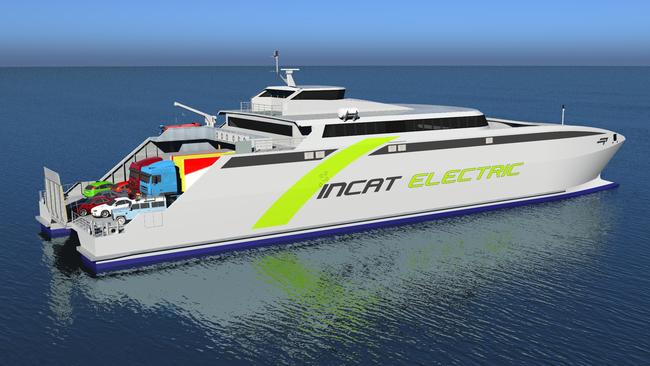
Mr Clifford said global demand for electric ferries was surging, and that he wanted Tasmania to be at the centre of the action.
“It’s been a learning curve, there’s no question about that,” he said.
“Everyone thinks batteries are very heavy, and they are, but on this ship we’ve taken away the main engines, gear boxes, and fuel tanks, and have actually ended up lighter.
“And our electrical team are developing skills as they adapt to what we have to do here.”
“That’s why this boat is extremely important to show the market.
“For Tassie, it means we’re going to be quadrupling our workforce over the next three or four years, and the plan is to deliver at least four boats of this scale each year.
“Which will mean 5000 to 6000 people employed.”
With groundwork at Incat’s new Boyer site anticipated to begin in coming months, and international shipping’s clean-energy revolution already well underway, Mr Clifford said he had no time to lose in starting the next chapter of Tasmania’s greatest export success story.
“Electric is just another challenge for us, but it’s the biggest one, and it’s got the biggest future,” he said.
“I’m 82 in a week or so, and the reality is I’ve got 30 years’ work to do, but I haven’t got 30 years to do it.
“So I’ve got to get into it.”


